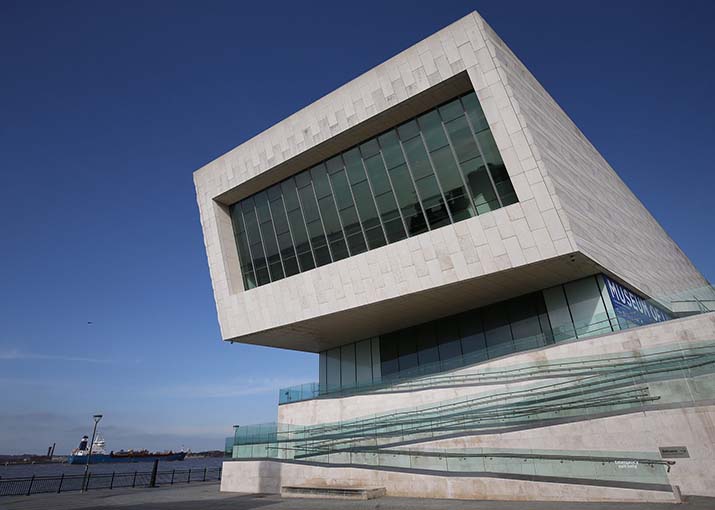Liverpool, a city rich in history and culture, is renowned for its iconic attractions like The Beatles Story and the Merseyside Maritime Museum. However, tucked away amidst the bustling streets and famous landmarks are a plethora of lesser-known museums that offer a deeper insight into Liverpool’s history and heritage. I embarked on a quest to unearth these hidden treasures. I will share my personal experiences with three of my preferred discoveries and recommend four more, offering comprehensive insights into the services, pros and cons, exact locations, accessibility, ticket details, recommendation ratings, and booking platforms to ensure you can embark on your own historical exploration of Liverpool.
Personal Favorites:
- The Museum of Liverpool

The Museum of Liverpool, situated on the picturesque waterfront, stands as a testament to the city’s vibrant history and culture. This institution is a treasure trove of historical artifacts, documents, and immersive exhibitions that vividly recount Liverpool’s journey from its modest origins to the bustling cosmopolitan hub it is today.
The Experience:
The Museum of Liverpool is a treasure trove of the city’s history. Housed in a modern, purpose-built structure on the waterfront, the museum boasts a rich collection of artifacts, documents, and interactive exhibits that chronicle Liverpool’s journey from its humble beginnings to the vibrant metropolis it is today.
Highlights:
- Liverpool Overhead Railway Car: Step inside a lovingly preserved carriage from the world’s first elevated electric railway, a marvel that once graced Liverpool’s skyline. This exhibit offers a unique glimpse into Liverpool’s spirit of innovation.
- Little Liverpool: Tailored for families, this interactive section offers hands-on activities for children to learn about the city’s history, from its architectural marvels to its maritime connections.
- Architectural Splendor: The museum’s architectural design is an art form in itself, with its contemporary aesthetics and stunning vistas of the waterfront. It’s not only a place of historical reflection but also a fantastic backdrop for memorable photographs.
Pros:
- Free Admission: The Museum of Liverpool offers free admission, ensuring that it remains accessible to all visitors.
- Interactive Exhibits: The interactive displays within the museum engage visitors of all ages, breathing life into history.
- Prime Location: Nestled on the waterfront, it’s conveniently located near other Liverpool landmarks, including the iconic Royal Liver Building and the Merseyside Maritime Museum.
Cons:
- Peak Season Crowds: Like any popular attraction, the museum can become crowded during peak tourist seasons. Planning your visit during quieter times is advisable.
Location: Pier Head, Liverpool Waterfront, L3 1DG, United Kingdom
Recommendation Rating: 4.9/5
How to Reach:
The Museum of Liverpool is easily reachable via public transport. You can take the train to Liverpool Lime Street station and then enjoy a picturesque stroll along the waterfront to the museum. It’s also well-connected by local bus routes. If you prefer to drive, there are parking facilities in close proximity.
Ticket Information:
As previously mentioned, admission to the Museum of Liverpool is free. However, certain special exhibitions or events may have separate admission fees. Therefore, it’s prudent to consult the museum’s official website for the latest information.
Exploring the Museum of Liverpool left a profound impact on me. The museum’s dedication to inclusivity and accessibility is truly commendable, offering all visitors an opportunity to connect with Liverpool’s diverse history. The fusion of interactive exhibits and the museum’s breathtaking architecture renders it a must-visit destination for history enthusiasts, families, and anyone eager to immerse themselves in Liverpool’s enthralling narrative.
- Victoria Gallery & Museum
Nestled discreetly within the stately red-brick walls of the University of Liverpool, the Victoria Gallery & Museum is a captivating odyssey into the realms of art, science, and curiosity. This charming establishment presents an intriguing fusion of art, science, and culture, all ensconced within a magnificent specimen of Edwardian architecture.
The Experience:
The Victoria Gallery & Museum is a hidden gem nestled within the University of Liverpool’s campus. This museum, housed in a stunning red-brick Victorian building, is a delightful blend of art, culture, and history. As I explored its exhibits, I was captivated by the diverse range of collections, including fine art, scientific instruments, and curiosities from around the world.
As you step into the Victoria Gallery & Museum, you are instantaneously transported back in time by the Edwardian splendor that envelops you. The building’s breathtaking interior, adorned with intricate mosaic floors, graceful staircases, and a splendid concert room, is a work of art in itself.
Highlights:
- Tate Hall Museum: Step into a recreated Victorian collection of curiosities.
- The Waterhouse Café: A charming spot for refreshments in a picturesque setting.
- Breathtaking Architecture: The building’s architecture alone is worth the visit.
- Diverse Exhibitions: The museum hosts an eclectic array of exhibitions, encompassing classical art and whimsical displays, ensuring that each visit is a novel experience. From fine art to historical relics, there’s something to captivate every curiosity.
- Tavistock Library: The historic library, furnished with its original fixtures, provides a glimpse into the academic pursuits of a bygone era.
- The Leggate Theatre: This petite theater within the museum often serves as a venue for events and lectures, delivering an intimate and exceptional cultural encounter.
Pros:
- A tranquil and lesser-visited museum.
- Free entry.
- Fascinating mix of art, history, and culture.
- The Waterhouse Café offers a peaceful respite.
Cons:
- Limited dining options on-site.
Location: Ashton Street, Liverpool, L69 3DR, United Kingdom
Recommendation Rating: 4.8/5
How to Get There:
The museum boasts excellent connectivity via public transport, with bus stops and train stations within strolling distance. If you prefer to travel by car, be mindful that on-street parking may be limited, so it’s prudent to consider public transportation or utilize nearby city center car parks.
Ticket Information:
Admission to the Victoria Gallery & Museum is, as previously mentioned, free. However, it’s worth noting that special exhibitions or events might have separate admission charges. Thus, consulting the official website for the most up-to-date information is advisable.
My exploration of the Victoria Gallery & Museum felt akin to embarking on a transcendent voyage through time and culture. The wondrous architecture and the diverse spectrum of exhibits, spanning from art to history and science, cater to a wide array of interests. It undoubtedly stands as a concealed gem within Liverpool’s rich cultural tapestry, and I wholeheartedly endorse adding it to your catalogue of must-visit attractions in this dynamic city.
- Western Approaches Museum

The Experience:
The Western Approaches Museum offers a unique perspective on Liverpool’s role during World War II. Tucked away in a secretive wartime bunker, this museum provides an immersive journey into the strategies, technology, and experiences of those who worked tirelessly to protect the city and its vital port during the war.
Despite its unobtrusive entrance in Exchange Flags, the Western Approaches Museum offers a compelling journey that takes you back in time as you descend into the underground complex.
Highlights:
- Authentic Bunker: Step into the original wartime bunker, preserved as it was during the conflict.The museum is housed in the very bunker where Admiral Sir Max Horton, responsible for safeguarding crucial Atlantic convoys, directed wartime operations. The authentic setting provides a genuine historical atmosphere.
- Code-Breaking Room: Learn about the critical role played by code-breakers.
- Educational and Eye-Opening: Gain a deeper appreciation of Liverpool’s wartime history.
Pros:
- Historical Authenticity: The museum’s location in the original bunker adds an unparalleled level of authenticity.
- Educational Value: The museum effectively educates visitors about Liverpool’s wartime significance and the efforts to protect transatlantic shipping.
- Knowledgeable Guides: The museum’s guides are well-versed in the bunker’s history and offer valuable insights during tours.
Cons:
- Limited Space: Due to the bunker’s original size, the museum can become congested during peak visiting hours.
Location: 1-3 Rumford Street, Liverpool, L2 8SZ, United Kingdom
Recommendation Rating: 4.7/5
How to Get There:
The Western Approaches Museum is centrally situated in Liverpool, offering easy access via public transportation. Liverpool Lime Street train station is a short walk away, and numerous bus routes pass through Exchange Flags. If you opt for driving, parking facilities are available nearby.
Ticket Information:
Ticket prices are reasonable, with discounts for students, seniors, and families. It is advisable to consult the museum’s official website for the most current pricing and opening hours.
My visit to the Western Approaches Museum was a deeply moving experience. It provided a unique opportunity to step back in time and gain insight into Liverpool’s pivotal role during WWII. The museum’s commitment to preserving this historical site is admirable, and the immersive exhibits breathe life into the past. For history enthusiasts and those intrigued by wartime history, this museum is an indispensable stop in Liverpool.
Recommended Museums:
The International Slavery Museum:
- An important exploration of Liverpool’s role in the transatlantic slave trade.
- Thought-provoking and educational.
The World Museum Liverpool:
- A diverse collection spanning natural history, anthropology, and world cultures.
- Suitable for families and those interested in global history.
The Sudley House:
- A charming historic house featuring an impressive collection of artwork.
- Peaceful and artistic ambiance.
Merseyside Maritime Museum:
- An extension of the renowned Maritime Museum, focusing on Liverpool’s maritime history.
- Ideal for those intrigued by Liverpool’s seafaring past.
Liverpool’s lesser-known museums offer a chance to delve into the city’s multifaceted history, from its maritime connections to its contributions to science, art, and global culture. Each of these museums provides a unique perspective on Liverpool’s rich heritage and is well worth exploring for an in-depth understanding of this vibrant city.



